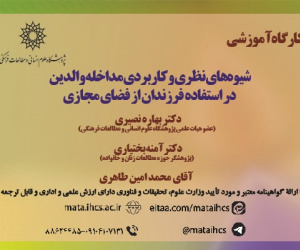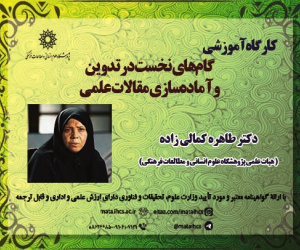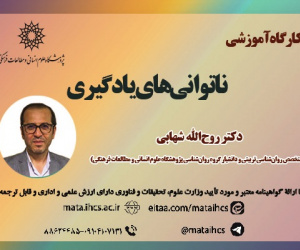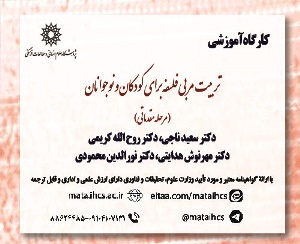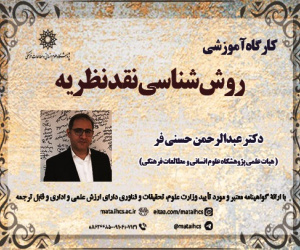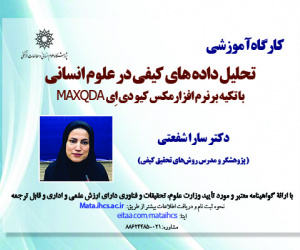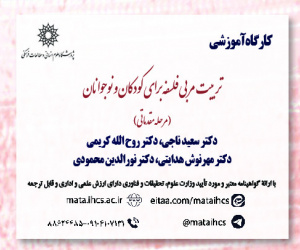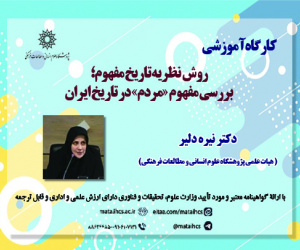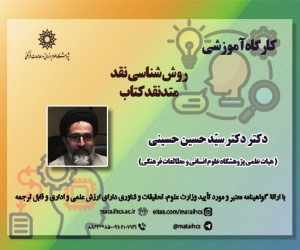مروری نظام مند بر ادبیات تأمین مالی خرد (رویکرد مبتنی بر چارچوب ADO-TCM) (مقاله علمی وزارت علوم)
درجه علمی: نشریه علمی (وزارت علوم)
آرشیو
چکیده
به تأمین مالی خرد به عنوان یک رویکردی تحول آفرین در عرصه توسعه اقتصادی و اجتماعی به ویژه در جوامع کم درآمد و فقیر، به طور فزاینده ای توجه شده است. هدف اصلی پژوهش حاضر مرور نظام مند ادبیات تأمین مالی خرد با رویکرد مبتنی بر چارچوب ADO-TCM است که با استفاده از روش فراترکیب چارچوبی ارائه می دهد که این چارچوب، ساختار مقالات را ازجمله پیشینیان، تصمیمات، پیامدهای پژوهشی (ADO)، نظریه های استفاده شده، زمینه مطالعاتی و روش های پژوهشی (TCM) بررسی عمیق می کند؛ در این راستا، با جست وجوی گسترده در پایگاه های علمی معتبر، 50 مقاله پراستناد مرتبط با تأمین مالی خرد انتخاب و به طور عمیق تحلیل محتوایی شدند و سازه های مربوط با استفاده از استراتژی کدگذاری باز و محوری استخراج شد؛ بنابراین، هفت دسته پیشینیان، هشت نوع تصمیم پژوهشی و شش پیامد اصلی شناسایی شدند؛ علاوه براین، پژوهش حاضر ۱۴ نظریه، 7 زمینه مطالعاتی و 3 روش پژوهشی مرتبط با تأمین مالی خرد را شناسایی کرده است و درنتیجه مرور خلأهای موجود در پژوهش فعلی را برجسته کرده و زمینه های پژوهشی آینده را برای بهبود راهبردهای تأمین مالی خرد و افزایش تأثیر آن پیشنهاد می دهد.A Systematic Review of the Microfinance Literature: An ADO-TCM Framework Approach
Microfinance, recognized as a transformative approach in economic and social development, particularly within low-income communities, has garnered increasing attention. The primary objective of this study is to conduct a systematic review of microfinance literature utilizing a framework-based approach grounded in the ADO-TCM model, which employs the meta-synthesis approach. This framework provides an in-depth analysis of the structure of relevant studies, encompassing predecessors, research decisions, research outcomes (ADO), utilized theories, study contexts, and research methods (TCM). An extensive search in reputable scientific databases yielded 50 highly cited articles related to microfinance, which were then subjected to in-depth content analysis. Relevant constructs were extracted using open and axial coding strategies, leading to the identification of seven categories of predecessors, eight types of research decisions, and six primary outcomes. Furthermore, this study identified 14 theories, seven study contexts, and three research methods pertinent to microfinance. Consequently, the study highlights existing gaps in current research and suggests future research areas to enhance microfinance strategies and increase their impact.Keywords: Economic development, Microfinance, Meta-synthesis, ADO-TCM framework Introduction In the era of globalization and technological advancement, understanding the landscape of microfinance is essential. Microfinance involves the provision of financial services to low-income and impoverished individuals, playing a crucial role in fostering inclusive growth and development within a country. By offering financial opportunities to underserved segments of society, microfinance enhances economic participation and contributes to overall economic growth (Judijanto et al., 2024; Beg et al., 2024; Pimpale, 2012). By providing access to credit and financial tools, microfinance empowers individuals to improve their standard of living and escape poverty (Palmkvist & Lin, 2015). The global expansion of microfinance across more than 120 countries, bolstered by the support of multinational institutions and governments, underscores its significance in promoting economic and social empowerment (Hossain et al., 2024; Pattnaik et al., 2024). Given the importance of microfinance and the expanding body of research in this area, the primary objective of this study is to conduct a systematic review of the microfinance literature using the integrated theoretical framework of ADO-TCM. In this context, the research questions are as follows: 1) What research areas have been explored in prior microfinance studies? 2) What theories have been applied in the existing microfinance research? 3) What research methods have been employed in previous studies? 4) What key antecedents influence microfinance? 5) What decisions derived from these antecedents shape microfinance outcomes? 6) What outcomes result from these decisions? Materials & MethodsMeta-synthesis is a research method within the broader category of research synthesis. Bench and Day (2010) define research synthesis as encompassing four main components: (1) Meta-theory: analysis of the theories used in previous studies; (2) Meta-method: analysis of the methodologies employed in those studies; (3) Meta-synthesis: qualitative analysis of the findings from past studies; and (4) Meta-analysis: quantitative analysis of study findings. Meta-synthesis involves systematically examining data and findings extracted from related qualitative studies. The sample for a meta-synthesis is drawn from selected qualitative studies based on their relevance to the research question (Walsh & Downe, 2005). It is important to note that meta-synthesis does not entail a comprehensive review of the qualitative literature on a topic, nor does it involve the analysis of primary or secondary data from selected studies. Instead, it focuses on analyzing and synthesizing the findings of these studies. In essence, meta-synthesis integrates the interpretations of primary data from the selected research. This approach is particularly suited for qualitative studies that may not be grounded in broad theoretical frameworks; rather than simply summarizing findings, it offers an interpretive synthesis (Zimmer, 2006; Sandelowski & Barroso, 2007). The methodology employed in this study follows the seven-step process outlined by Sandelowski and Barroso (2007) for meta-synthesis, which has been applied to examine the ADO-TCM framework within the field of microfinance. This framework thoroughly investigates the structure of past studies, including antecedents, decisions, outcomes (ADO), theories used, research contexts, and methodologies (TCM). FindingsUsing the meta-synthesis approach and the seven-step method outlined by Sandelowski and Barroso (2007), this study conducted an extensive search in reputable academic databases, resulting in the selection of 50 highly cited studies related to microfinance. These studies were thoroughly content-analyzed to extract relevant constructs. Consequently, the study identified seven categories of antecedents: (1) Performance and efficiency, (2) Social and economic factors, (3) Policy and regulations, (4) Resources and financing, (5) Advancements, (6) Financial risks and challenges, and (7) International factors. Additionally, eight types of research decisions were identified: (1) Potential behaviors, (2) Small businesses, (3) Gender-based entrepreneurship, (4) Social entrepreneurship, (5) Individual entrepreneurship, (6) Women's entrepreneurship, (7) Collaborative and collective entrepreneurship, and (8) Creation of shared value. The study also identified six primary outcomes: (1) Sustainable and resilient economic development, (2) Self-sufficiency, (3) Improved living conditions and poverty reduction, (4) Social interactions, (5) Entrepreneurial ecosystem development, and (6) Enhanced business environment. Furthermore, the present studies identified 14 theories, including Institutional Theory, Supply and Demand Theory, State Capacity Theory, Market Segmentation Theory, Glass Ceiling Theory, Life Cycle Theory, Motivation-Profit Theory, Virtuous Spiral Theory, Capability Theory, Resilience-Asset Theory, Hybrid Organizations Theory, Behavioral Economics Theory, Resource-Based Theory, and Agency Theory. The focus areas of the research included countries such as Bangladesh, India, China, Eastern Europe, Central Asia, Africa, Latin America, and other regions in Asia (excluding India and Bangladesh). The research approaches employed were quantitative, qualitative, and mixed methods, utilizing both cross-sectional and longitudinal time frames. Discussion & Conclusion.The primary objective of this study is to conduct a systematic review of the microfinance literature through the ADO-TCM framework. As one of the first comprehensive studies in this field, it systematically examines the factors influencing microfinance and categorizes them into constructs such as antecedents, decisions, outcomes, methods, contexts, and theories. Previous research indicates that microfinance has had significant positive impacts on poverty reduction, women's empowerment, and entrepreneurial growth, particularly in developing countries, since the 1970s. However, the success and sustainability of these programs depend on factors such as socio-economic contexts and the regulatory environment. Moreover, prior studies have shown that while microfinance can provide vital financial resources to disadvantaged populations, its effectiveness relies on various factors, including financial literacy and education. This study highlights the financial challenges associated with microfinance, such as risk management and the need for continuous innovation to meet the evolving demands of clients. Additionally, it identifies several key gaps in the academic literature, including the overemphasis of previous research on specific countries such as those in Africa, China, India, and Bangladesh, as well as the lack of comparative studies across different geographic regions. This underscores the need for further research on microfinance in developed countries and the exploration of cultural impacts on its adoption and effectiveness. Ultimately, future studies should aim to address these gaps, evaluate the long-term impacts of microfinance, and explore innovative models that enhance its scalability and sustainability.
